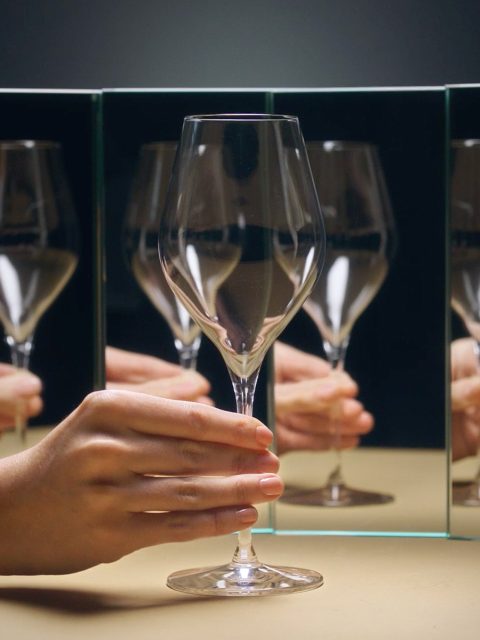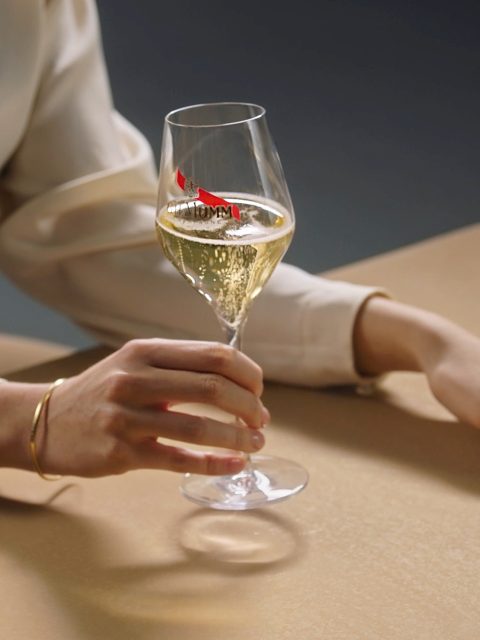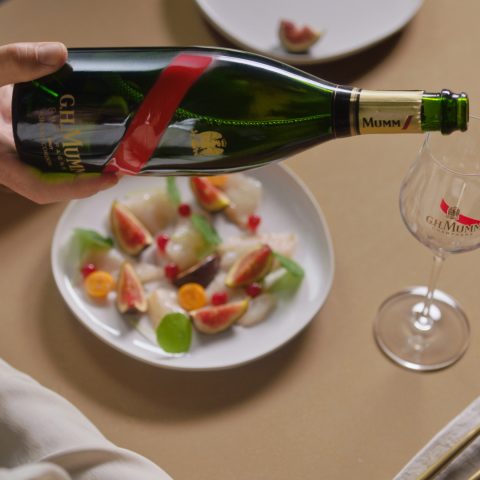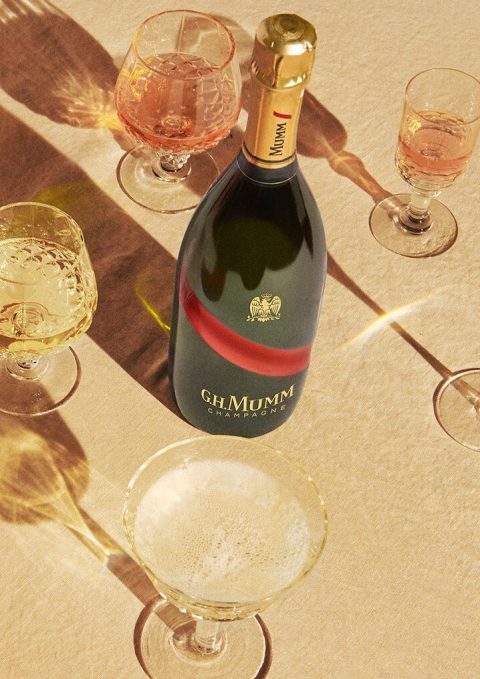Why does Champagne have bubbles?
It is almost impossible to think of champagne without hearing the joyous ‘pop’ of a bottle being opened and seeing those fine bubbles rushing to the top of the glass. Behind this magical moment lies a wealth of ancestral expertise, nurtured and developed since Maison Mumm’s foundation some two centuries ago.
The formation of champagne bubbles
Champagne owes its bubbly texture to a natural process that involves a little natural chemistry and a lot of expertise. In a word: fermentation.
Fermentation takes place after pressing, when the grape juice is transformed into still wine with the help of natural yeasts. However, unlike still wines, champagne is fermented twice: once in open vats, and then again in bottles. Champagne producers add a dose of ‘liqueur de tirage’ to their bottles, bringing a tiny amount of yeast into contact with the natural sugars found in the wine. The resulting second fermentation releases carbon dioxide, and bubbles start to form gradually inside the sealed bottle in a process known as ‘prise de mousse’. The yeast deposit from this second fermentation is part of what gives champagne its complex aromatic profile, adding rounded nuances of brioche, hazelnut and toast.
You said bubbly?
Did you know that each bottle of Mumm champagne contains more than ten million bubbles? In fact, the pressure inside a champagne bottle can reach up to 6 bars. The quality of its bubbles is what makes Mumm champagne so elegant and fresh.
The bubbles also play an essential role in communicating the wine’s range of aromas, acting as an elevator for the molecules that stimulate our senses. Given the importance of bubbles to the quality of champagne, it is not surprising to learn that Mumm set up a research laboratory in 1870 to better understand the formation of champagne bubbles during the ‘prise de mousse’ process. Ever since, Mumm has worked tirelessly to expand and enrich its expertise, committed to making champagnes of the very highest quality.
A delicate ring of bubbles
The choice of glass is important to fully appreciate a great champagne. As it turns out, the ubiquitous flute is not the recommended recipient. In fact, the ideal option is a tulip-shaped white wine glass, with a wide base tapering towards a narrow opening. Its shape will allow the bubbles and aromas to fully develop.
Our experts also recommend that you pour your champagne as close as possible to a tilted glass held upright, to encourage the formation of a delicate ring of bubbles. Filling each glass in two or three pours will give the bubbles time to develop.
From the first time you set eyes on a glass of champagne, you should already be able to gauge its quality. Look for fine bubbles, which are the sign of a great champagne.



